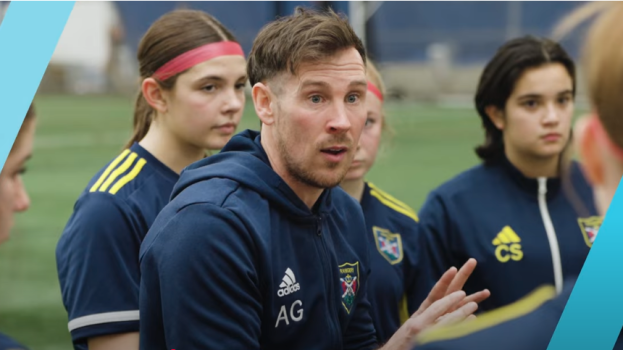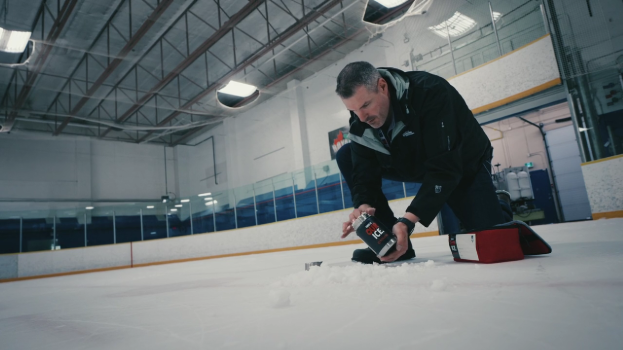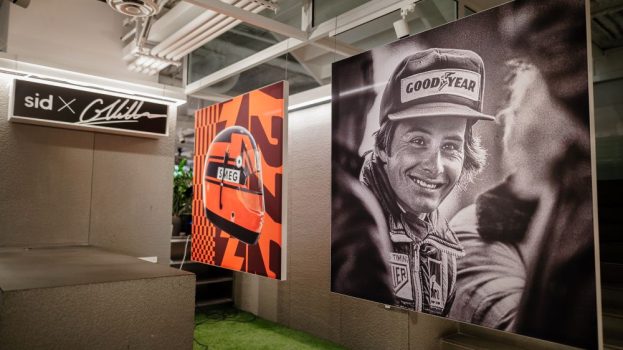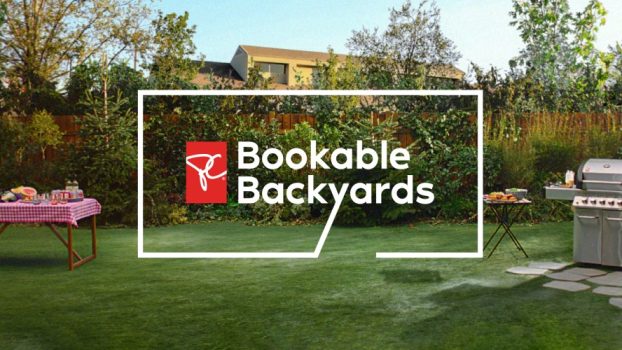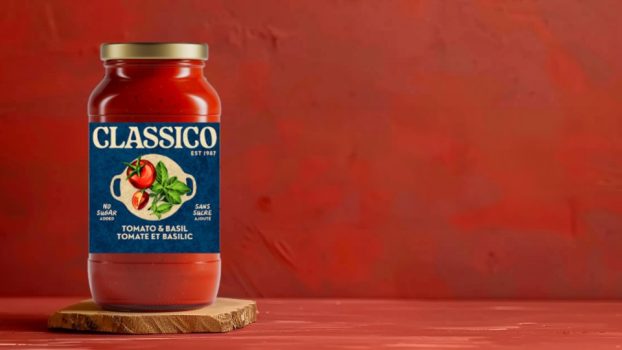As surely as the Detroit Red Wings are a popular team for aficionados of the video game NHL 2003, games and platforms are likely to top wish lists this holiday season. Marketers who pursue the Nintendo generation are naturally aware of the category’s high status among the target group, and many are eager to snag cachet by association, through promotional deals with gaming console and software companies.
The total U.S. video game category grew to US$9.4 billion in 2001, a 43% jump over the previous year, according to NPD FunWorld, a division of Port Washington, N.Y.-based market information provider NPD Group. Here in Canada, youth appear to be equally addicted – industry projections suggest sales will climb by 28% in the 2003 fiscal year, when they are expected to reach $800 million. (See Strategy MEDIA, ‘Video kills the traditional toy,’ p. M10.)
According to Toronto-based Youth Culture Group, which in fall 2001 polled 1,800-plus 14-to-24s about their habits, playing video games is most prominent among 12- and 13-year-olds, 15% of whom plug in their systems every day after school. On weekends, that figure more than doubles. Although the numbers drop considerably among older teens, they still find time to exercise their thumbs on Saturdays and Sundays.
Tween boys who love the pastime also happen to be motivated by freebies, says Michele Erskine, managing partner-research director at Youth Culture Group, which is why it makes sense for marketers trying to reach that segment to hook into gaming-related promos.
Marketers queue up to play
According to Ryan Mugford, group marketing manager for Xbox Canada, Toronto, interest among marketers is growing ‘exponentially.’ He credits that to the category’s high marketing activity, which first heated up last year with the introduction of video game system Xbox, and new systems from competitors Nintendo (GameCube) and Sony (Playstation 2).
In fall 2001 Redmond, Wash.-based Microsoft spent a whopping US$500 million on the Xbox launch and Sony Computer Entertainment America ponied up US$250 million in an attempt to counteract the effort. This season continues to be aggressive. Recently, Nintendo of America announced it has earmarked US$140 million for this holiday season alone, a 25% hike over last year, while Sony has invested US$250 million in its new campaign.
Plus, adds Mugford, gaming platforms have become more sociable, enabling four people to play at once. ‘When you couple that with [marketing] investment from the companies in this category, it becomes one of the most attractive industries.’
Rob Segal, president of Toronto-based Segal Communications, which handles all promotional activity in Canada for Sony PS2, reports he gets about three or four requests for tie-ins per day. ‘By far gaming is the number-one player among youth – it has total domination of the 12-to-35 age group,’ he says. ‘It’s also one of the most irreverent, cool, hip products out there.’
In early November, Sony, Wal-Mart and a trio of cinema chains teamed up to launch one of these programs – consumers who purchase a PS2 at Wal-Mart are rewarded with a buy-one-get-one-free movie pass for Famous Players, Galaxy and Guzzo (Quebec) cinemas. The offer is supported by a trailer ad created by Segal, which starts out with Santa delivering his loot. He accidentally rips a package in the process and the gift catches his eye: it’s a PS2. St. Nick starts gaming, and when Little Billy catches him in the act, he’s invited to join in. In the end, the joke’s on Billy’s parents who find their living room in shambles. The promo spot ends with an explanation of the Wal-Mart offer.
Segal says the arrangement is mutually beneficial. ‘We want to make sure some of our top retailers are supporting our [product], and sometimes attaching a promotion helps push the needle over,’ he says, adding that another Wal-Mart offer, Live + Loud, hands out a CD with the purchase of one of Sony’s software games. ‘It also brings new customers into Wal-Mart, later teens and young adults, who might not necessarily think to buy their games there.’
A similar value-added program debuts at Future Shop on Nov. 26, whereby shoppers who pony up for a PS2 and a copy of the game Sly Cooper receive a pair of hockey tickets. (Customers must live within a 50-mile radius of Vancouver, Calgary, Edmonton, Ottawa or Montreal.) Lori DeCou, director of corporate communications at the Burnaby, B.C.-based retailer, says Future Shop is always looking for occasions to offer incentives to the consumer.
‘It’s a premium that works and aligns itself well with the [Future Shop] brand,’ she says. Advertising will consist of in-store signage and flyer support. A total of 3,500 pairs of tickets are being distributed.
Co-operative event programs
The biggest trend in partnerships is cooperative event promotions, where gaming firms partner up with ‘like-minded companies,’ says Ron Bertram, VP and GM of Nintendo Games Canada in Vancouver. For instance, in October Nintendo launched its For Play Tour, featuring a team of ‘fun and wild’ gamers that visit hot spots in B.C., Alberta, Quebec and Ontario to give consumers a chance to test out gear. According to Bertram, Labatt Breweries tagged along for the West Coast offensive.
‘Most marketers are savvy enough to know that if they’re after the [youth] segment, males in particular, video games rule,’ says Bertram. ‘In the last three to five years, we have had lots of promotional opportunities come our way.’
Bertram expects those offers to pour in over the next three months, when Nintendo will spend more than 50% of its entire marketing budget on its new ‘Born to Play’ campaign for GameCube.
Other console systems are also witnessing the trend toward event association. Sony, for instance, has a newcomer onboard for its mall tour this year. Reps of Rogers AT&T Wireless will be on hand, demonstrating wireless games that can be played on cell phones, and handing out coupons directing participants to its retail locations. ‘Our positioning for the last while is that we’re trying to demonstrate that our products are more than a phone,’ says John Boynton, Toronto-based VP of consumer marketing.
There is a ‘classic bounce-back’ facet to the promo, says Boynton; PS2 buyers receive a $75-off coupon for a GSM handset at Rogers’ retail stores, where they in turn get a scratch ‘n’ win card for Sony prizes. But, ‘there’s real thematic and product linkage in the programs,’ says Boynton. ‘Gaming is still a new frontier [in wireless] so that’s why you want to hook up with someone with a very strong brand like Sony for awareness and credibility purposes.’
The console prize
Despite the tendency toward event-related joint efforts, several brands that have linked with gaming platform companies for the first time, are sticking to straight prize giveaways. A recent example is Toronto-based Maple Leaf Top Dogs, which has flagged 10 Microsoft Xbox Spider-Man packages as part of a larger Spidey promotion. ‘Top Dogs is trying to set the standard for fun within the hot dog category,’ explains Adam Grogan, marketing manager for Maple Leaf’s consumer foods division. ‘We believe that hot dogs and entertainment work well together, [and] you can’t ignore the popularity of gaming right now.’ Consumers will learn about the contest, which runs until Dec. 31, via a national in-theatre slide campaign.
Similarly, Peterborough, Ont.-based Quaker gave away 10 Nintendo Game Boy Advance packages for its Cap’n Crunch cereal brand in a contest that ran this summer and stretched into fall. Kids, who could also send away for a free Nintendo T-shirt if they bought two boxes of Cap’n Crunch, were invited to participate through on-pack advertising, as well as a 10-second tag on YTV. ‘We were pleased with the results from a prize perspective and the T-shirts redeemed extremely well,’ says Ryan Denys, assistant marketing manager on ready-to-eat cereals, who won’t share figures, but says the brand would consider similar programs in the future.
Other companies are more creative, in an attempt to encourage interactivity. A Super Mario Sunshine Prize Pack, including a GameCube, was a prize in a contest organized by YTV and Kraft Canada’s Post cereal division for its Extreme Crème Taste Oreo O’s product. Kids had to watch The Zone in September to catch daily trivia questions, after which they were invited to the TV station’s Web sites to provide answers and sign up to win.
Tim Cormick, YTV’s Toronto-based director of marketing, says the station has been involved in promos with the likes of Nintendo for at least six years. ‘We know from our research that this is a top-of-mind activity. It’s more than a toy, but an activity that kids are involved with.’
Searching for relevance
But it’s not necessarily enough to offer prizes. For Xbox’s Mugford, a promo must ‘speak directly to a consumer in an intelligent way,’ add value to the consumer experience and it must be relevant for both parties. ‘Our demographic knows it’s being marketed to,’ he explains. ‘Because of that transparency, you need to work harder to impress. A simple promo won’t be enough.’
An example he cites is last year’s program between Microsoft and Universal Music, which offered a CD featuring music from various games, with purchase of a system. ‘What we were able to do is reinforce our key attribute – because Xbox has a hard disk where you can rip those tunes – and Universal got the opportunity to showcase existing and future artists. We had phenomenal sales.’
Similarly, this fall’s co-operative effort between Sega and Xbox includes two free games – Sega JT and Jet Set Radio Future – a value worth $160. Says Mugford: ‘It reinforces the social side of Xbox, because both games offer the ability to play with multiple partners, while Sega has the ability to introduce and reinforce two properties into a broad audience.’ As a result of the Sega deal, which debuted Oct. 18, sales have been ‘spectacular,’ increasing by 500% in some locations.
Product placement:
the next frontier
A major opportunity in game-related marketing lies in product placement. Darcy Taylor, president and partner of Vancouver youth marketing consultancy Masev Communications, suggests this avenue has been largely untapped by Canadian marketers, although some of his clients are considering it.
He points out the benefits are huge. ‘[Audience] impressions and time in front of the brand in the game world is exorbitant compared to real life,’ he says, giving the example of playing Tony Hawk Pro Skater 3 versus attending an extreme sports event. Sponsors are evident in both virtual and real scenarios, but while the actual competition occurs over one weekend, ‘game play is year round, every day after school, four hours a day.’
Plus, TV viewership is diversifying in today’s multi-channel universe, but with video games there is an opportunity to hit specific demographic segments. ‘You get a lot of bang for your buck,’ says Taylor, who adds that the number of youth who own or are looking to buy a platform is well over 70%.
In the U.S., where advertisers are often quicker to take advantage, product placement in video games is already established. Quiksilver and Jeep make appearances in Activision’s Pro Skater 3, while the main character of the software firm’s new Kelly Slater’s Pro Surfer chats on a Nokia mobile phone.
Meanwhile, competitor Electronic Arts (EA) has scored multimillion-dollar deals with McDonald’s and chip manufacturer Intel for its new online multiplayer game, The Sims Online, which debuts this holiday season. As a result, Intel’s jingle and logo are integrated into The Sims, while players can also sell McDonald’s grub to earn points.
On EA’s Web site The Sims Online is described as ‘an unpredictable, alternate reality’ where players can ‘build a network of friends to enhance [their] power, wealth, reputation and social standing.’ (Sounds like high school.)
Still, despite the benefits, Robert Barnard, founder of youth marketing consultancy D-Code in Toronto, cautions that, product placement arrangements, just like other promos, must be an obvious fit, and they must apply to the target group. ‘Cadillac throwing placement into a game targeted at 18-year-olds isn’t exactly where they would want to put their money; nor should Dentyne sponsor flight simulators. You have to match the strategy to the game.’ In other words, having Detroit captain Steve Yzerman wolf down a Big Mac during intermission is probably not a good idea.

